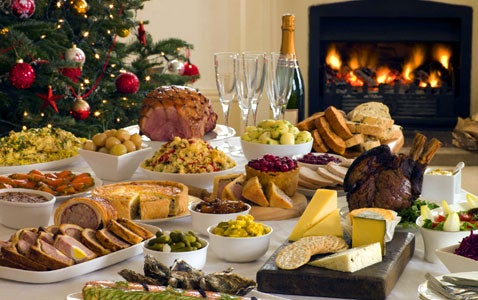

Following five simple rules when preparing and handling food can help ensure that holiday meals and treats add to the season's festivities rather than making people sick, say experts at PANAFTOSA, the Pan American Health Organization's specialized center for food safety and veterinary public health.
Rio de Janeiro, Brazil, 21 December 2012 (PAHO/WHO - PANAFTOSA) — Following five simple rules when preparing and handling food can help ensure that holiday meals and treats add to the season's festivities rather than making people sick, say experts at PANAFTOSA, the Pan American Health Organization's specialized center for food safety and veterinary public health.
About one-third of foodborne disease outbreaks are caused by unsafe food consumed in private homes, according to PANAFTOSA, and a large proportion of all foodborne disease episodes are caused by a handful of unsafe food-handling practices.
During the holidays, food is often prepared in greater quantities and ahead of time, increasing the risk of foodborne illness. This makes the holidays a good time to review the World Health Organization's "WHO Five Keys to Safer Food," a checklist of practices that can prevent disease-causing microbes from contaminating or multiplying in foods.
"The WHO five keys to safer food offer a tool to empower consumers, vulnerable communities, women and children through food safety education and health protection," said PAHO Director Dr. Mirta Roses Periago. "We want everyone to have a happy, safe and healthy holiday."
The WHO Five Keys are:
- Use safe water and ingredients
Use safe water or treat it to make it safe; select fresh and wholesome foods; choose foods processed for safety such as pasteurized milk; wash fruits and vegetables, especially if eaten raw; do not use food beyond its expiry date. - Keep your hands, utensils, and surfaces clean
Wash your hands before handling food and often during food preparation; wash your hands after going to the toilet; clean all surfaces and equipment used in food preparation; protect kitchen areas from insects, rodents and other animals. - Cook food thoroughly
Cook food thoroughly, especially meat, poultry, eggs and seafood; bring foods like soups and stews to boiling. For meat and poultry, make sure juices are clear, not pink; reheat cooked food thoroughly. - Keep food at safe temperatures
Do not leave cooked food at room temperature for more than 2 hours; refrigerate promptly all cooked and perishable food (preferably below 5°C); keep cooked food piping hot (more than 60°C) prior to serving; do not store food too long in the refrigerator; do not thaw frozen food at room temperature. - Separate raw from cooked food
Separate raw meat, poultry and seafood from other foods; use separate equipment and utensils such as knives and cutting boards for handling raw foods; store food in containers to avoid contact between raw and prepared foods.
"Safe food handling can prevent many foodborne diseases," said Dr. Cristina Tirado, PAHO/WHO regional advisor on food safety. She added that "PAHO has supported the adaptation of the WHO Five Keys to the sociocultural context in Latin America and the Caribbean and their implementation in communities, schools, indigenous communities, and with farmers".
Symptoms of foodborne illness include stomach pain, diarrhea, nausea, chills, fever, and headache. In some cases, foodborne illness can be fatal. Symptoms can appear anywhere from 30 minutes to two weeks after a person has come in contact with foodborne bacteria, although they usually appear in the first 4-48 hours. People who are more vulnerable to foodborne illness are the elderly, children under 5, and people with weakened immune systems. Cases of foodborne illness should be reported to your doctor and the local health department.
PAHO, which celebrates its 110th anniversary this year, is the oldest international public health organization in the world. It works with its member countries to improve the health and the quality of life of the people of the Americas. It also serves as the Regional Office for the Americas of WHO.
Links:
- PAHO/WHO Food Safety Program at PANAFTOSA
- Five keys to food safety during the holiday season (poster)
Media Contacts:
Donna Eberwine-Villagran, Tel. +1 202 974 3122, Mobile +1 202 316 5469 or Sebastián Oliel, Phone +1 202 974 3459, Mobile 202 316 5679, Knowledge Management and Communications, PAHO/WHO.
PANAFTOSA
Cely Ávila, Knowledge Management and Communications, PANAFTOSA-PAHO/WHO, + 5521 3661-9046, Facebook, Twitter.



